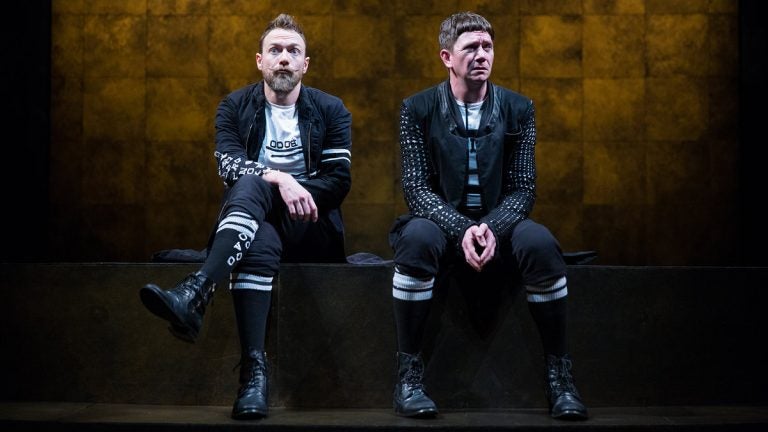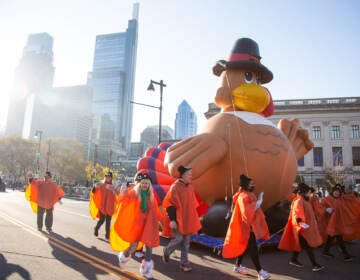Review: ‘Rosencrantz and Guildenstern’ are very much alive

Rosencrantz and Guildenstern? Two bit characters in Shakespeare’s “Hamlet.” They’re childhood friends of the prince of Denmark, who lately broods and seems to act from impulse – maybe it has something to do with his uncle killing his father, then marrying his mother. (Sounds plausible.) How to figure Hamlet out? The royal courts summons Rosencrantz and Guildenstern to scope out the boy.
And that’s most of what we know about them from Shakespeare – who does, in an important plot hinge, seal their fate. But what did the two guys do all that time in the royal court, while a suspicious Hamlet was avoiding them? And exactly why were they called in the first place? The king and queen have given them scant orders; Shakespeare has given them few lines. Just what are these guys supposed to be doing?
Tom Stoppard decided to supply the backstory – and 363 years after “Hamlet was published, his “Rosencrantz and Guildenstern Are Dead” opened in the Edinburgh Fringe Festival. It’s now a solid part of the Stoppard canon, and at the Wilma Theater it’s a treat to watch for a few reasons. First, of course, is the play itself, in which the two men become vehicles for Stoppard’s non-stop wit with words, flow of ideas and diddling with logic. Second, there’s the joy of watching Keith Conallen and Jered McLenigan in meticulously considered performances of the two guys, and the actor Ed Swidey’s magnetic performance as the head of a troupe of players who also figure in “Hamlet.”
The third reason this “R&G” is special is its evolution. Wilma’s artistic director, Blanka Zizka, decided to schedule “Hamlet” and “Rozencrantz and Guldenstern Are Dead” side by side. Her production of “Hamlet” came in late winter, and with the exception of the actor playing Hamlet, every character Stoppard uses from Shakespeare’s play is portrayed by the same actor here, and with the same team of designers, a maneuver that unites the plays and makes the centuries between them disappear. Even before “Hamlet” was being rehearsed, Conallen and McLenigan began rehearsing their parts in “R&G” so that the characters they were developing under Stoppard’s influence would also be the one they played under Shakespeare’s.
The result is a highly developed Rosencrantz and Guildenstern under Zizka’s direction of both plays. They have, essentially, nothing to do while they wait to engage Hamlet in some little scene or other (Stoppard uses Shakespeare’s text for these), so they play mind games and games of chance with coins. They are bored, and crawl or roll around the stage aimlessly (and sometimes, too much) as they try to work out why they’re at the court or why they even exist.
And all the while they philosophize, most successfully about the way a common experience – theirs, for instance — evolves from something that may or may not make perfect sense, but that people share. Later in the play, this becomes a theory of audience behavior: “Audiences know what to expect – that is all they are prepared to believe in,” declares Swidey as the director of the troupe of players Rosencrantz and Guildenstern become caught up with.
As always, Stoppard’s cerebral work will leave some people energized by its storm of ideas and others puzzled by precisely the same. When I left the Wilma after the show was over Thursday, I heard both contingents – one group in front of me, the other behind. The take-away: Both were trying to parse what they’d seen. Must have been a good night at the theater.
_“Rosencrantz and Guildenstern Are Dead” is extended through June 20 at the Wilma Theater, Broad Street between Locust and Spruce Streets. 215-546-7824 or www.wilmatheater.org.
WHYY is your source for fact-based, in-depth journalism and information. As a nonprofit organization, we rely on financial support from readers like you. Please give today.




